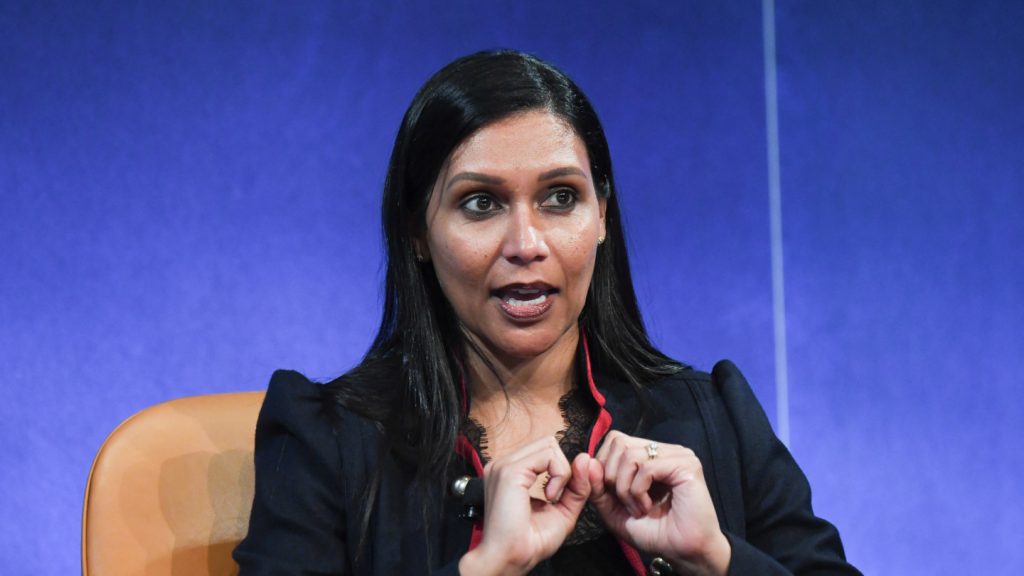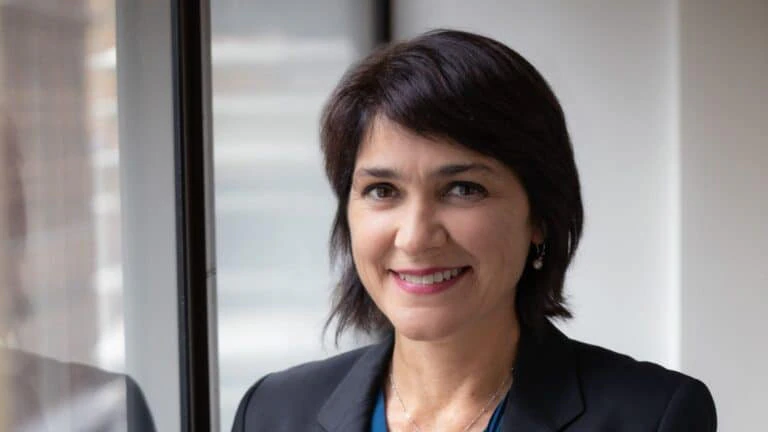Kathryn Jones can’t put a number on how many thousands of kilometres of fibre optic cable will be needed to run through tunnels under the Australian continent.
When the Telstra executive, who delivers big projects for the company’s InfraCo business, went to a conference run by the Pacific Telecommunications Council in Washington in January, Jones met a man from a United States telco infrastructure group.
“They could foresee that there wouldn’t be enough fibre in the ground in the US just to support AI,” she says. “Who knows?”
Telstra already has more than 250,000 kilometres of fibre linking up with 133 third-party data centres and 121 “points of interconnect” on the national broadband network, each of which serves a specific geographic area.
And it’s laying down another 14,000 kilometres, putting pink and blue cables into the ground to better connect Australian cities. With 2200 kilometres completed to date, the full cost of a new intercity fibre network will be $1.6 billion – Telstra’s biggest fibre investment for 30 years.
“That’s really to build a new national, sovereign fibre backbone,” says Jones.
Microsoft has agreed to be the first customer for the new network, which will intersect with Telstra’s subsea cables linking Australia with the Asia-Pacific region and the US.
Digital data is created every time someone takes a photo on their mobile phone, sends an email or saves a document to the cloud. The explosion in data fuelled by AI has created an “insatiable appetite” for fast, resilient fibre networks, says Jones. “AI requires data centres, it requires power, but it also requires fibre connectivity.”
Telstra predicts 24 per cent to 33 per cent year-on-year growth in demand for data in Australia until 2031.
The company’s original intercity fibre network was built between 20 and 35 years ago when data needs were much lower. “Some of the reasons we built it between Perth and Adelaide was to support the facsimile service in the 1980s – the world has changed,” Jones explains.
Telstra is not alone in spying a lucrative opportunity. Savvy financiers at the Macquarie Group recently increased the bank’s stake in fibre network operator Vocus and this month struck a $5.25 billion deal with TPG Telecomto buy most of its fibre assets.
When Macquarie Asset Management first invested in Vocus in 2021, “one of the things that we really loved about it was the breadth of its fibre network, in particular, its inter-capital fibre network”, says Asia-Pacific infrastructure co-head Ani Satchcroft.
While the financial group has been investing in Vocus, adding TPG’s assets allows it to “turbocharge the breadth, the scale and the coverage of the Vocus network”, says Satchcroft. “It continues the investment thesis that we had to Vocus going in, but allows us to have a step change.”
Vocus expects to run Australia’s second-biggest fibre network if the competition regulator approves its purchase of TPG’s assets, and will own fibre networks spanning 51,000 kilometres. This will allow it to compete more aggressively with Telstra as well as Optus, which has more than 36,000 kilometres of fibre cables.

The Australian Competition and Consumer Commission (ACCC) requires 27 providers of telecoms infrastructure (including big companies such as Telstra and Vocus, along with smaller ones like Aussie Broadband and Superloop) to report annually on where they lay down fibre.
But the ACCC doesn’t typically make that information public and the federal infrastructure department says it doesn’t keep track of fibre networks, making it hard to figure out exactly where each company stands in the great fibre race. And some companies are reluctant to disclose how much fibre they directly own.

NBN Co is also ploughing more fibre into the ground, claiming 7.5 million Australian premises will have direct access to fibre networks by the end of 2025.
NBN itself only provides wholesale services, granting access to more than 120 retailers which then resell services to both households and businesses. Its revenues from business services in the 12 months to June 30 were $1.14 billion, just under one-fifth of its total telecommunications revenues.
Private companies that own fibre networks and also sell services to households are required to structurally separate their network operations from their retail businesses so they can’t promote their own services at the expense of competitors.
Telstra sold its retail network to the NBN, and TPG split its wholesale and retail broadband businesses in 2022. The wholesale business, which was named Vision Network, sells services to TPG and its competitors and is part of the assets being sold to Vocus.
Some owners of fibre networks focus on selling services to households and small businesses. These include America’s Uniti Group, which owns Opticomm, and GigaComm (whose investors include Macquarie Capital.)
Aussie Broadband, by comparison, builds fibre networks in Melbourne, Sydney, Adelaide, Brisbane and Perth marketed to businesses. It rents space from Opticomm and the NBN to sell its internet services to householders.
The telco group has about 1700 kilometres of fibre connecting more than 500 buildings. “We’re definitely expanding,” says Aussie Broadband co-founder and managing director Phillip Britt.

“We’re building out as we get customer demand, and we also look at where we have customers on NBN enterprise services and go, ‘should they be on Aussie fibre services?’” On Friday, Aussie Broadband said it had signed a new deal with building products maker Ventora Group to use a combination of the company’s networks and the NBN’s enterprise ethernet.
Both Vocus and TPG have in the past “gone pretty hard” on fibre, according to Britt.
“So I think it diminishes competition a little bit in that you’re taking two major competitors that normally go head-to-head and putting all the eggs in one basket,” he says.
“But there are plenty of other competitors out there, so that will hopefully keep them honest.”
Before installing a fibre network, companies need to get a carrier licence from the Australian Communications and Media Authority and approvals from traditional landowners, home and building owners, councils and governments.
Despite the time and cost incurred, companies like laying their own fibre cables because they can make higher profit margins than renting space on other networks to sell services.
Fibre networks typically last 25 to 30 years. “Once it’s in the ground, you can sweat that asset for a fair time,” Britt says.
Companies can use their fibre to provide managed services at specific speeds to customers, or sell off some of it to third parties, turning it into “dark fibre”.
“There’s no electronics on the end of it,” Britt says. “Hence the word ‘dark’. It hasn’t been lit. And that’s typically used by people who want to get from data centre to data centre … because they can put their own electronics on the end of it, they can then run that fibre at whatever speed they want.”
Australian Financial Review (25th October 2024)


